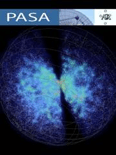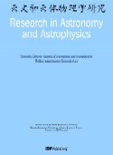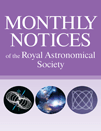
PUBLICATIONS OF THE ASTRONOMICAL SOCIETY OF AUSTRALIA
Scope & Guideline
Exploring the Frontiers of Astronomy and Beyond.
Introduction
Aims and Scopes
- Observational Astronomy:
The journal frequently publishes studies that utilize observational data from various telescopes and instruments, including the Murchison Widefield Array (MWA) and Australian Square Kilometre Array Pathfinder (ASKAP), to explore cosmic phenomena. - Astrophysical Modelling and Simulations:
Many articles focus on theoretical frameworks and computational models to understand complex astrophysical processes, including galaxy formation, star evolution, and cosmic reionization. - Extragalactic and Galactic Studies:
Research often examines both extragalactic and galactic structures, emphasizing the dynamics, evolution, and properties of galaxies, clusters, and cosmic structures. - Pulsar and Neutron Star Research:
The journal includes significant contributions to the study of pulsars and neutron stars, focusing on their dynamics, emissions, and implications for astrophysics. - Machine Learning Applications in Astronomy:
There is a growing emphasis on the application of machine learning techniques for data analysis and classification tasks, enhancing the efficiency of astronomical surveys. - Cosmology and Dark Matter Studies:
Research articles often delve into cosmological implications, dark matter research, and the large-scale structure of the universe, reflecting ongoing interest in fundamental questions about the cosmos.
Trending and Emerging
- Multi-Wavelength and Multi-Messenger Astronomy:
Research integrating data across various wavelengths (radio, optical, X-ray) and from different astronomical phenomena (e.g., gravitational waves, neutrinos) is on the rise, reflecting the trend towards a holistic understanding of astrophysical events. - Deep Learning and AI in Astronomy:
There has been a significant increase in the application of deep learning and artificial intelligence for data analysis, classification, and enhancement of observational techniques, showcasing the intersection of technology and astronomy. - Studies on Cosmic Reionization:
Research exploring the epoch of reionization and its implications for cosmic structure is gaining momentum, as it addresses fundamental questions about the evolution of the universe. - Investigating Galactic and Extragalactic Interactions:
There is a growing focus on the interactions between galaxies and their environments, including studies on mergers and the impact of dark matter on galaxy formation. - Pulsar Timing Arrays and Gravitational Wave Detection:
The interest in pulsar timing arrays as a method for detecting gravitational waves is increasing, reflecting advancements in observational techniques and theoretical frameworks.
Declining or Waning
- Classical Stellar Evolution Studies:
There has been a noticeable decrease in traditional studies focused solely on stellar evolution without integrating modern observational data or machine learning approaches. - Theoretical Models Lacking Observational Data:
Papers that do not correlate theoretical models with observational evidence are appearing less frequently, as the community increasingly values data-driven research. - Basic Spectroscopy without Novel Techniques:
Research that employs basic spectroscopic methods without incorporating advanced techniques or new methodologies has been less prominent in recent publications. - Focus on Isolated Stellar Phenomena:
There is a declining interest in studies that examine isolated stellar phenomena without broader context or connection to larger astrophysical questions. - General Public Outreach Initiatives:
While outreach remains important, papers focused strictly on public engagement strategies in astronomy are being published less frequently, indicating a shift towards more research-focused content.
Similar Journals

ACTA ASTRONOMICA
Unveiling the Secrets of Space: A Hub for Innovative ResearchACTA ASTRONOMICA, the esteemed journal published by the COPERNICUS FOUNDATION POLISH ASTRONOMY, is a pivotal platform for disseminating significant advancements in the fields of Astronomy, Astrophysics, and Space Science. With an established history spanning from 1996 to 2023, this journal maintains a strong position in academia, evidenced by its Q2 ranking in both Astronomy and Astrophysics as well as Space and Planetary Science categories. Targeted at researchers, professionals, and students, ACTA ASTRONOMICA offers a comprehensive collection of articles that foster a deeper understanding of celestial phenomena, planetary exploration, and theoretical advancements in the universe. While it is not an open-access journal, its structured format caters to a global audience eager to engage with cutting-edge research. Notably, its Scopus rankings highlight its relevance, placing it in the 56th percentile for Astronomy and Astrophysics and the 44th percentile for Space and Planetary Science, ensuring that contributors are part of an influential community that is shaping the future of astronomical study.

JOURNAL OF ASTROPHYSICS AND ASTRONOMY
Unraveling the Secrets of Space and Time.JOURNAL OF ASTROPHYSICS AND ASTRONOMY, published by the Indian Academy of Sciences, stands as a pivotal resource for researchers and professionals in the fields of astrophysics and astronomy, with a rich history of publication dating back to 1980. This esteemed journal aims to disseminate high-quality research, fostering advancements in how we understand celestial phenomena, space environments, and planetary sciences. With a current Impact Factor that places it in the Q3 category for both Astronomy and Astrophysics and Space and Planetary Science, it maintains a crucial role in the global academic community, particularly within India. Although not an open access journal, its scholarly contributions are vital for both emerging and established researchers striving to push the boundaries of our knowledge in the cosmos. The journal is indexed in Scopus, ranking 56th in Astronomy and Astrophysics and 72nd in Space and Planetary Science, reflecting its ongoing significance and reach in the scientific dialogue.

Astrophysical Bulletin
Where Groundbreaking Research Meets the StarsWelcome to the Astrophysical Bulletin, an esteemed journal published by MAIK NAUKA/INTERPERIODICA/SPRINGER that has been contributing to the fields of Astronomy and Astrophysics since its inception in 2009. With a prominent Q3 rating in both Astronomy and Astrophysics and Instrumentation, this journal is designed to foster an understanding of astronomical phenomena through comprehensive research articles and groundbreaking discoveries. While currently not offering open access, it remains a vital resource for researchers and professionals looking to stay informed on the latest advances in the field, featuring a compelling selection of peer-reviewed studies that underscore its relevance and impact. The Astrophysical Bulletin ranks impressively in Scopus, making it a trusted platform for disseminating vital knowledge and new insights into our universe.

Universe
Fostering Collaboration in the Realm of Astrophysics.Universe is a distinguished peer-reviewed journal published by MDPI, specializing in the dynamic fields of Physics and Astronomy. Established in 2015, this Open Access journal has rapidly gained recognition, achieving a prestigious Q1 quartile ranking in its category as of 2023. With its E-ISSN 2218-1997, the journal primarily serves the international scientific community, offering a platform for researchers to disseminate innovative ideas and findings. Based in Switzerland, Universe covers a wide range of topics within astronomy and astrophysics, ensuring that cutting-edge research is accessible to an ever-growing audience. Its commitment to open access principles since its inception allows for unrestricted dissemination of knowledge, fostering a collaborative environment essential for scientific advancement. By aligning its objectives with the promotion of high-quality research and interdisciplinary discourse, Universe stands as a vital resource for academics, professionals, and students aiming to contribute to and engage with the ever-evolving landscape of astronomical research.

REVISTA MEXICANA DE ASTRONOMIA Y ASTROFISICA
Pioneering Research in the Realm of the StarsRevista Mexicana de Astronomía y Astrofísica, published by the Universidad Nacional Autónoma de México (INSTITUTO DE ASTRONOMÍA), is a prominent academic journal dedicated to advancing the knowledge and understanding of astronomy and astrophysics. As a Q3-ranked journal in both Astronomy and Astrophysics, and Space and Planetary Science in 2023, it serves as an invaluable platform for researchers and professionals within these fields. With an ISSN of 0185-1101, this journal seeks to foster innovative research and dialogue among scholars, presenting groundbreaking studies spanning from theoretical astrophysics to observational astronomy. Although it does not operate under an open-access model, the journal remains vital for its contributions to scientific literature from Mexico, with articles converging over several decades from 1996 to 2024. By offering insights into the latest findings and methodologies, Revista Mexicana de Astronomía y Astrofísica not only enhances the academic landscape but also inspires future generations of scientists and students passionate about unraveling the mysteries of the universe.

Bulgarian Astronomical Journal
Unveiling the Secrets of the StarsThe Bulgarian Astronomical Journal, published by the BULGARIAN ACADEMY OF SCIENCES, INSTITUTE OF ASTRONOMY, serves as a vital platform for the dissemination of research in the field of Astronomy and Astrophysics. With the ISSN 1313-2709 and E-ISSN 1314-5592, this journal has been pivotal in showcasing original studies and advancements in astronomical sciences from 2014 and will continue to do so through 2025. Although categorized in Q4 within the ambit of Astronomy and Astrophysics, it provides essential insights and innovative findings, making significant contributions to the global academic community. Positioned in the lower quartile of Scopus rankings, recognized as #87 out of 90, it offers an opportunity for burgeoning researchers and seasoned professionals alike to engage with emerging ideas and trends in the discipline. While it currently does not feature an open access model, readers and contributors can anticipate a rich exchange of scientific knowledge that fosters collaboration within the astronomy community.

Research in Astronomy and Astrophysics
Advancing Knowledge in the Cosmos.Research in Astronomy and Astrophysics, published by the National Astronomical Observatories under the Chinese Academy of Sciences, stands out as a pivotal platform for disseminating cutting-edge research in the fields of astronomy and astrophysics. With an ISSN of 1674-4527 and an E-ISSN of 2397-6209, this esteemed journal operates as an open access publication, ensuring that high-quality research is available to a broad audience without any financial barriers. As of 2023, it holds a commendable Q2 quartile ranking in both Astronomy and Astrophysics, as well as Space and Planetary Science, reflecting its importance and revered position among leading journals. Spanning from 2009 to 2024, it is geographically rooted in the United Kingdom but engages a global readership and author base, making significant contributions to the rapidly evolving discourse in astrophysical studies. Moreover, its rankings in Scopus underscore its relevance, ranking 43rd out of 90 in Astronomy and Astrophysics and 61st out of 104 in Space and Planetary Science, placing it firmly within the competitive landscape of scientific research. Research in Astronomy and Astrophysics is dedicated to fostering innovation and communication within the scientific community, offering researchers, professionals, and students alike a valuable resource for collaboration and knowledge advancement.

MONTHLY NOTICES OF THE ROYAL ASTRONOMICAL SOCIETY
Connecting Minds with the Wonders of the Universe.The MONTHLY NOTICES OF THE ROYAL ASTRONOMICAL SOCIETY (MNRAS), published by Oxford University Press, serves as a premier platform for the dissemination of significant research in the fields of Astronomy, Astrophysics, and Space and Planetary Science. Established in 1913 and with an impressive impact factor reflected in its 2023 Q1 rankings—13th in Earth and Planetary Sciences and 14th in Physics and Astronomy—this journal is renowned for its rigorous peer-reviewed articles, fostering advancements in our understanding of the universe. Researchers, professionals, and students alike benefit from its rich content, which spans a vast array of topics within its scope, from stellar dynamics to planetary formation. While the journal does not currently offer Open Access options, the scholarly contributions published herein are invaluable for pushing the boundaries of contemporary scientific inquiry and ensuring that the latest findings reach an engaged audience globally.

ASTROPHYSICS
Exploring the Cosmos: Unraveling the Mysteries of the UniverseASTROPHYSICS, published by Springer/Plenum Publishers, stands as a crucial platform for the dissemination of groundbreaking research in the field of Astronomy and Astrophysics. Established in 1965 and continuing its legacy until 2024, the journal highlights significant advancements, theoretical frameworks, and observational data that collectively push the boundaries of our understanding of the universe. Although currently categorized in the Q4 quartile for Astronomy and Astrophysics and holding a Scopus rank within the 17th percentile, ASTROPHYSICS remains dedicated to offering rigorous peer-reviewed content that is essential for researchers, professionals, and students alike. While it does not provide open access, the journal's accessibility through institutional subscriptions ensures a wide reach among the academic community, allowing it to address the rising curiosity surrounding cosmic phenomena and contribute meaningfully to ongoing scholarly discourse. For those seeking to engage with the latest findings and methodologies in astrophysics, ASTROPHYSICS continues to serve as an indispensable resource.

Contributions of the Astronomical Observatory Skalnate Pleso
Unlocking Celestial Secrets: Your Access to Groundbreaking ResearchContributions of the Astronomical Observatory Skalnate Pleso, published by the Slovak Academy of Sciences Astronomical Institute, serves as a vital platform for the dissemination of research in the realm of Astronomy and Astrophysics. With its ISSN number 1335-1842 and E-ISSN 1336-0337, this esteemed journal aims to foster scientific discourse and innovation among researchers, professionals, and students alike. Although it currently holds a Q4 quartile ranking in its field as of 2023, the journal encourages contributions that enhance our understanding of universe dynamics and celestial phenomena through rigorous research methodologies. Spanning from its inaugural year in 2007 to the projected continuation through 2024, it integrates local insights from Slovakia with broader international endeavors in astronomy. The journal promotes an open-access approach, providing scholars unrestricted access to valuable findings and discussions, thereby advancing the boundaries of astronomical knowledge.